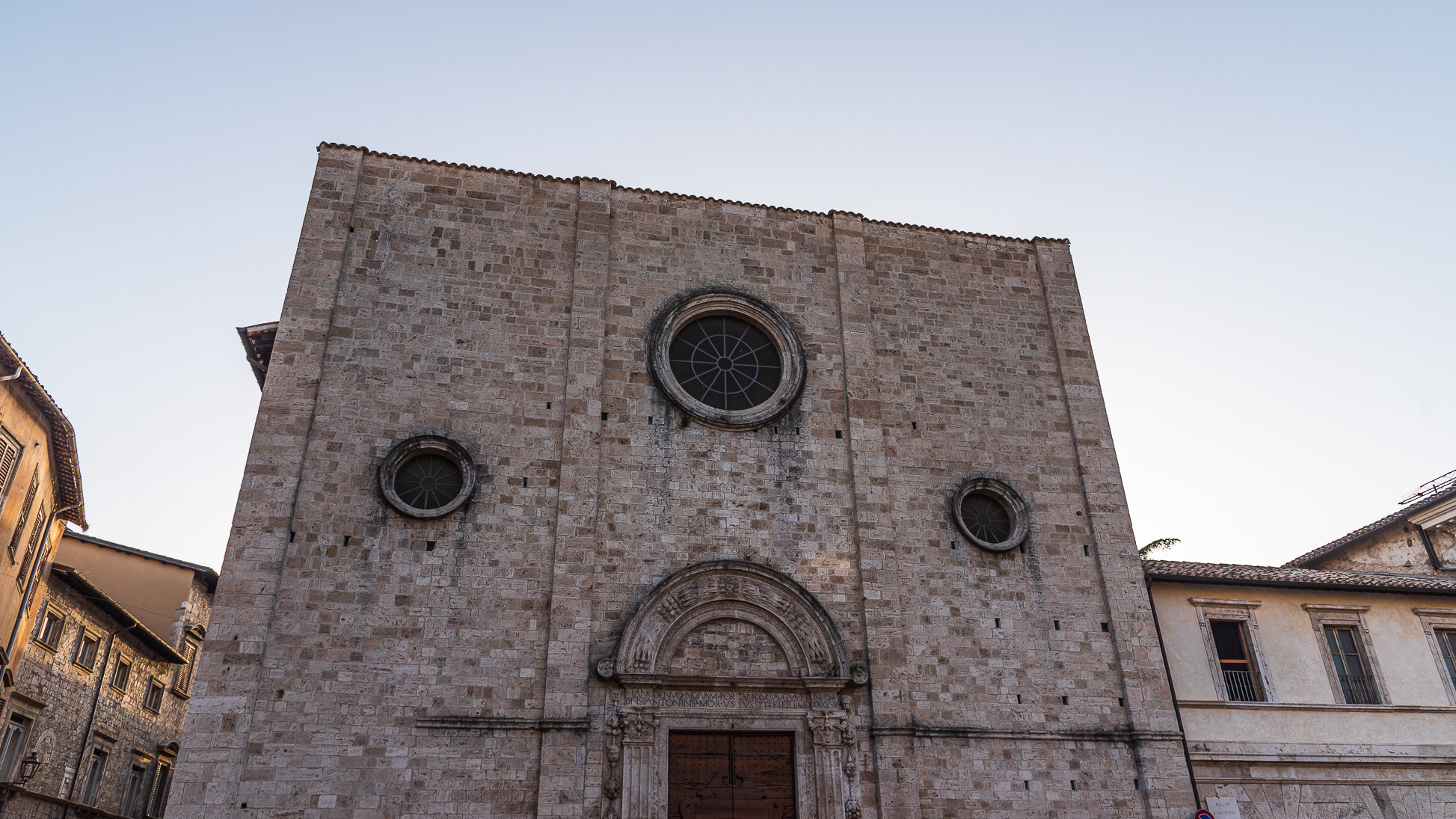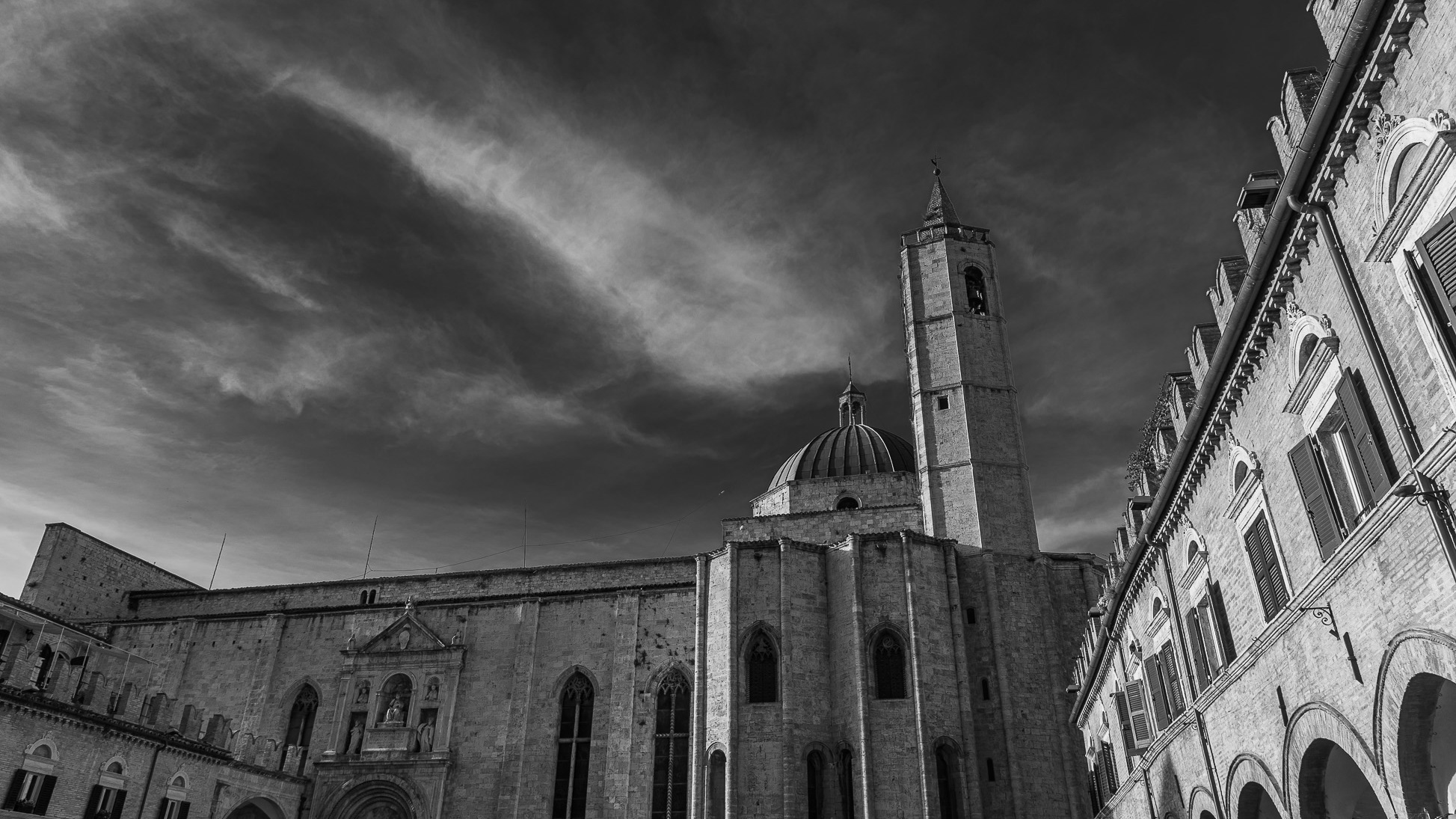2022
Offida, Ascoli Piceno. Church of S. Maria della Rocca
The church is located on the western edge of the town, surrounded on three sides by cliffs that open onto two valleys. It is a Romanesque-Gothic brick construction, built by Maestro Albertino in 1330 on a pre-existing small Benedictine church. The façade, facing the outside of the town, is articulated by pilasters and on the opposite side there are three high polygonal apses with white stone pilasters, single lancet windows and Gothic arches. On the central apse there is a Romanesque-Gothic portal that leads into the crypt (3 then 5 naves), as wide as the upper church and decorated with frescoes attributed to the Master of Offida. The upper church, with a single hall according to the tradition of the mendicant orders, preserves frescoes of Giotto influence, still attributed to the Master of Offida (those of the transept are dated by an inscription to 1367) and others attributed to Giacomo da Campli (15th century) . Part of the original decorations were also lost due to the deterioration of the roof. In the side altars, erected in different eras, there is the one dedicated to Saint Andrew, from the 15th century, with an altarpiece frescoed on the wall by Vincenzo Pagani. During the advance of the allied troops, between 16 and 18 June 1944 some German soldiers had completely undermined the church so that the rubble was in the way of the allies, but none of the thirty mines exploded and the inhabitants attributed the episode to a miracle of the Virgin. On the left side of the first step of the staircase leading to the church a sheep is represented eating a four-leaf clover; popular belief has it that if you position yourself on it, walking backwards along the staircase, with your eyes closed, your wish will be fulfilled.









